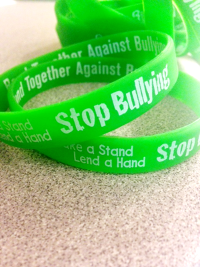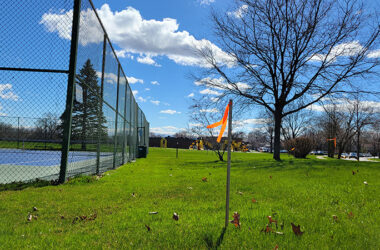 Peer mediators at Homewood-Flossmoor High School are more than referees — they’re problem solvers who help students listen to one another. The club members are peacemakers.
Peer mediators at Homewood-Flossmoor High School are more than referees — they’re problem solvers who help students listen to one another. The club members are peacemakers.
Peer mediators at Homewood-Flossmoor High School are more than referees — they’re problem solvers who help students listen to one another.
Thanks to their interventions, solutions can be found for simple misunderstandings that can poison a friendship, spill into a classroom and sometimes unintentionally involve a circle of friends.
Taking two students into a room, allowing them to air their grievances and helping them come to a decision on how to solve the issue is the mediators’ essential role.
Peer mediation, one of the many clubs at H-F, is open to students from all classes who, through an interview process, are selected for membership. All mediators go through a day-long conflict resolution training session.
Tiphnee Staples, an H-F counselor, said the goal is to teach mediators how to resolve conflicts, and she sees it as a way to keep kids from further action under the H-F discipline code. She and fellow counselor Dawn Edwards are co-sponsors for the program that has been active at H-F for more than a dozen years.
Peer mediators also see themselves as peacemakers at H-F. They’re not waiting just for conflict resolution; they’re trying to stop problems, such as bullying, as they see them. They use green as their color taking it from the Peace and Progress Peer Mediators logo.
“Don’t be a bystander, be an upstander. We learn it’s a lot about making a difference,” said junior Cameron Johnson.
Many of the conflicts they deal with can be blamed on social media — what is said online or in a tweet can be misread or misconstrued.
“Sometimes they look for a problem,” said Johnson. “Girls can be very chatty. Sometimes it’s just little things, or who you can trust.”
“It’s bullying and misunderstandings: they thought that they said something and they didn’t, or she doesn’t like me,” added senior Vanessa Bowers, who has been a mediator since her freshman year.
Students can ask for a mediation session. They also can be referred to mediation by a dean or a counselor. Two mediators are assigned to take the case and contact the two students involved to learn if they will agree to peer mediation. Then a meeting is set.
In a private room during the school day, the students are given written rules for the session, including speaking only to the mediator and no interrupting the other student. All parties sign a confidentiality statement.
After introductions, each student is asked to gives his or her input on the incident, be it a rumor, threat, name-calling, fighting, loss of property or other issue.
 The peer mediators then reiterate the facts as presented. There may be some give and take. Peer mediators will not judge or interject a solution. The resolution to the issue comes from the students in conflict. Mediation focuses on the problem and doesn’t access blame.
The peer mediators then reiterate the facts as presented. There may be some give and take. Peer mediators will not judge or interject a solution. The resolution to the issue comes from the students in conflict. Mediation focuses on the problem and doesn’t access blame.
During the conference “when it’s just the two students (in conflict) they’re often not hearing one another which is why the mediators are trained to paraphrase, and walk through and ask, “This is what I’m hearing; is this true? Is this correct?’ And that is when the other party can say their part. It is in a calm manner,” Staples explained.
The resolution is written out, and all four students sign it. The paper goes back to the dean’s office, and the mediators report the outcome to either Staples or Edwards.
“Hopefully it goes to a win/win situation, but it doesn’t always end up that way,” said Edwards. Sometimes students agree to disagree and move on. Peer mediation is only offered once. If problems persist, they are handled by a dean.
As a club, Peer Mediators is involving members in team-building exercises. It participates in holiday donation drives, and it is attempting to carry its message throughout the building by raising awareness of issues of conflict.
In October mediators conducted a “Stop Bullying” campaign. An informational video urged students to wear green that day, sign a banner and buy a “Stop Bullying” bracelet.
“As a senior, I believe altercations have gone down since freshman year. I definitely think something is working,” said Toba Apata.




